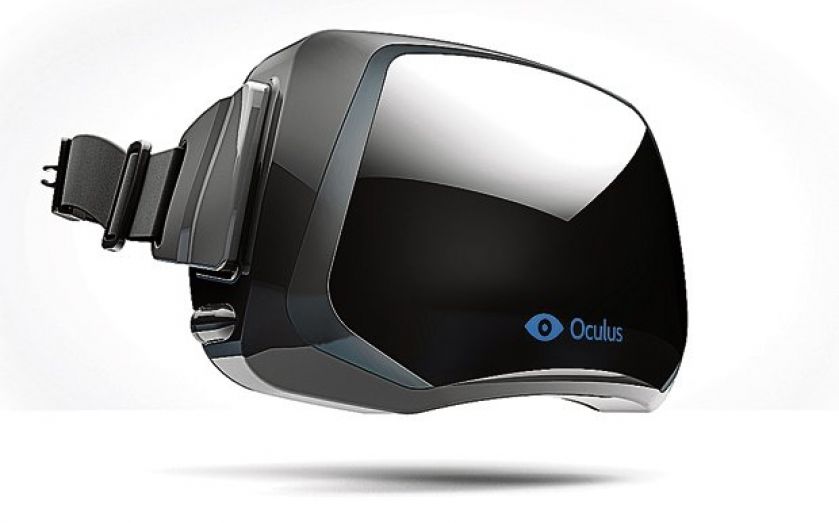Virtual reality is here (almost)…

Late on Tuesday, Facebook announced their acquisition of virtual reality start-up Oculus VR for $2bn. Here, Alex Dymoke gives the low-down on what many predict is the future of gaming and home entertainment
THE HISTORY
Oculus VR started life in 2011 in the Californian garage belonging to the parents of 19-year-old virtual reality enthusiast and self-taught hardware engineer Palmer Luckey. It was there that Luckey built the Oculus Rift prototype out of discarded old bits of tech. The teen managed to get an early version into the hands of id Software co-founder John Carmack, who was impressed enough to conduct his own demonstration of the headset at the Electronic Entertainment Expo in 2012. Shortly after, Oculus Rift embarked on a Kickstarter that raised almost £2.5m. Then, in January 2013, Marc Andreesen’s venture capital firm invested $75m with a view to turning the Oculus Rift into a consumer product (the consumer version is expected early next year). This week, Luckey’s company was bought by Facebook for $2bn. Not bad for a school drop out.
THE EXPERIENCE
Almost everyone lucky enough to get their hands on a demo version of the Oculus Rift has been absolutely blown away by it. A video on the company’s YouTube channel shows a range of people trying the headset for the first time, and the squeals of excitement speak for themselves. With the headset strapped on, immersion is total. On a flight sim, the dashboard of the cockpit becomes more detailed when you lean forward for a closer look. Look above your head or round to the left and right and the field of vision is complete. Headlines from articles describing the Rift experience range from “Mere Words Can’t Do Justice to how Awesome it is Inside the Oculus Rift” to “It's amazing until it makes you want to hurl”. The folks at Oculus say they’ve dealt with the motion sickness problem by increasing resolution, lowering latency and removing the motion blur.
VIRTUAL REALITY
From Descartes’ fear that we all might be stuck in one to William Gibson’s sci-fi classic Neuromancer, virtual realities have intrigued humans for centuries. Among engineers and scientists, the virtual reality Holy Grail has been to create a machine that facilitates “presence”, a state in which the brain responds to a world as if it is real, even though it knows it isn’t. Early forays into virtual reality gaming were ill-fated. Nintendo’s Virtual Boy, released in 1994, also employed the use of a head-mounted display. It was cumbersome and clunky (90s graphics don’t lend themselves to a feeling of “presence”) and was shelved after less than a year. Oculus VR, however, is certain that with the Rift, presence is no longer a dream.
THE EQUIPMENT
The Oculus Rift is like a pair of goggles with a tiny cinema screen inside. The screen is split in half, with one image for each eye, and the lenses are layered in order to create a 3D image. Sensors in the goggles change the image according to the position of the wearer’s head. This month, Oculus introduced the second version of their development prototype. The Oculus Rift Development Kit 2 has 1080p resolution, a major improvement on the 720p Development Kit 1 that induced nausea in foolhardy gamers. Resolution in the consumer version is going to be even higher. Not only that, the consumer version is going to have a complete redesign (perhaps now with Facebook branding?) so we have no idea what the shop-ready product will look like. However, the development kit is available for $350.
THE GAMES
Games must be specially designed to work on the Oculus Rift, and with the second development kit already out there developers are working round the clock to add to the already significant list of Oculus-ready games. Many existing games have been modified to incorporate Rift compatibility, including popular titles such as Half Life 2, Skyrim and Bioshock. However, the real excitement lies in titles built specifically for virtual reality. This is because many existing games have elements ill-suited to a head-mounted display format. Still, if you have a load of old games in which you want to get fully immersed, there are a variety of third party programmes including Tridef and VorpX that make previously incompatible Oculus-ready.
THE COMPETITION
Techies and gamers had been whispering about it for quite some time and this month it was finally confirmed: Sony are working on Project Morpheus, an immersive gaming platform to rival the Oculus Rift. It works in a similar way to Rift, with a headset used in conjunction with a motion sensing camera. Also like Oculus, the hardware is likely to undergo significant changes before finally hitting the shops sometime in the next couple of years. It’s hard to make a comparison at the moment, as we know so little about Sony’s offering, but based on the relatively undetailed spec sheets we can see that the Rift just about outdoes Sony when it comes to visuals – both are 1080p but Oculus has an OLED display, which beats Sony’s LCD panel.
THE FUTURE
There has been more virtual reality software produced in the last year than in the past twenty years combined, and games are just the half of it. As Luckey is fond of reminding us, his machine can be beneficial to fields as diverse as architecture, psychotherapy and the training of public service personnel. People can use Rift to get a sense of a space before they invest in a home. It can also be used to train firemen and paramedics, simulating extreme situations without the threat of real harm. Virtual reality technology has been used in a similar way by the army for years. The key difference with Oculus, though, is affordability – previously head mounted displays have cost in the tens of thousands of pounds. The Rift, however, will cost under $400. One day it could be as commonplace as a PlayStation.